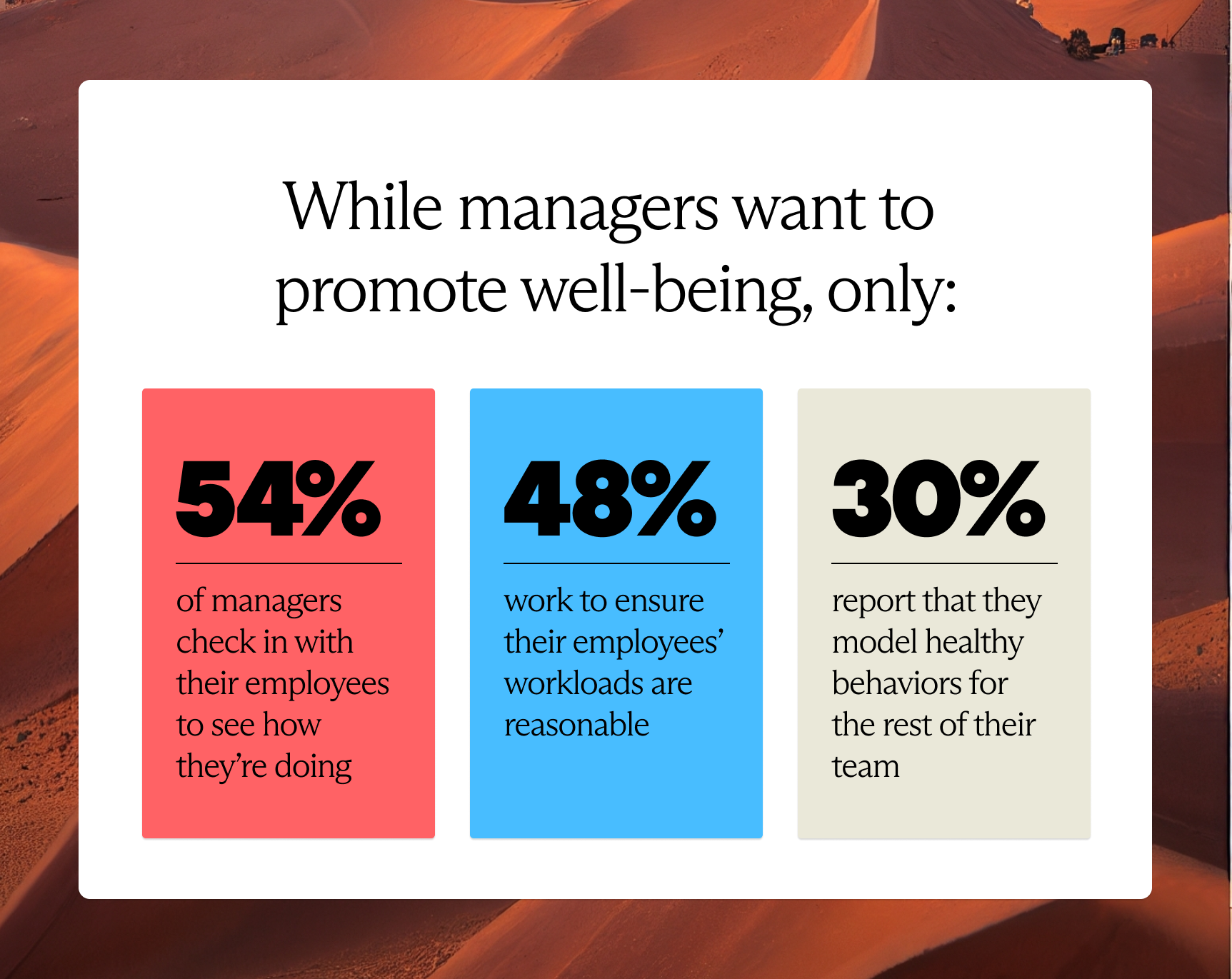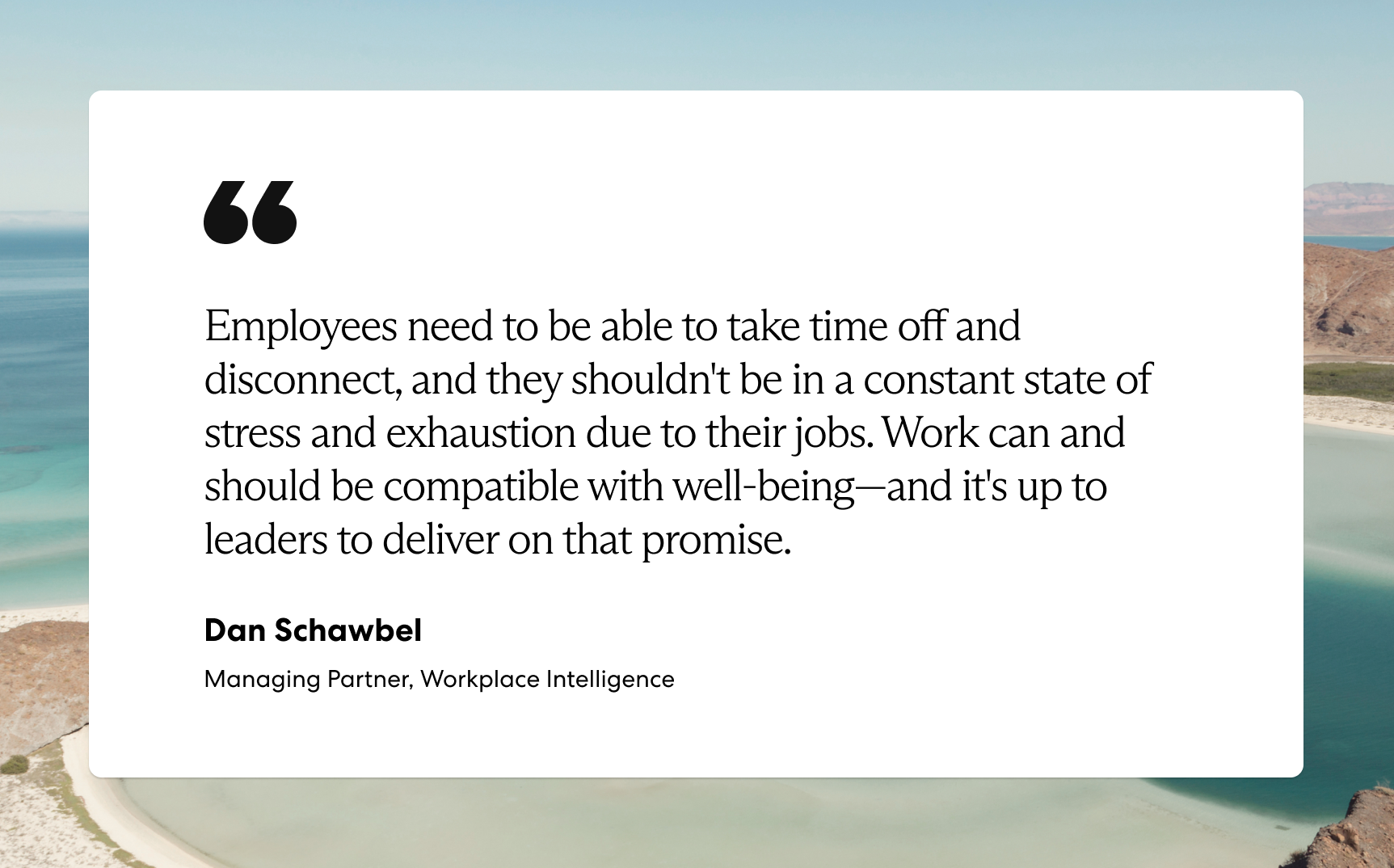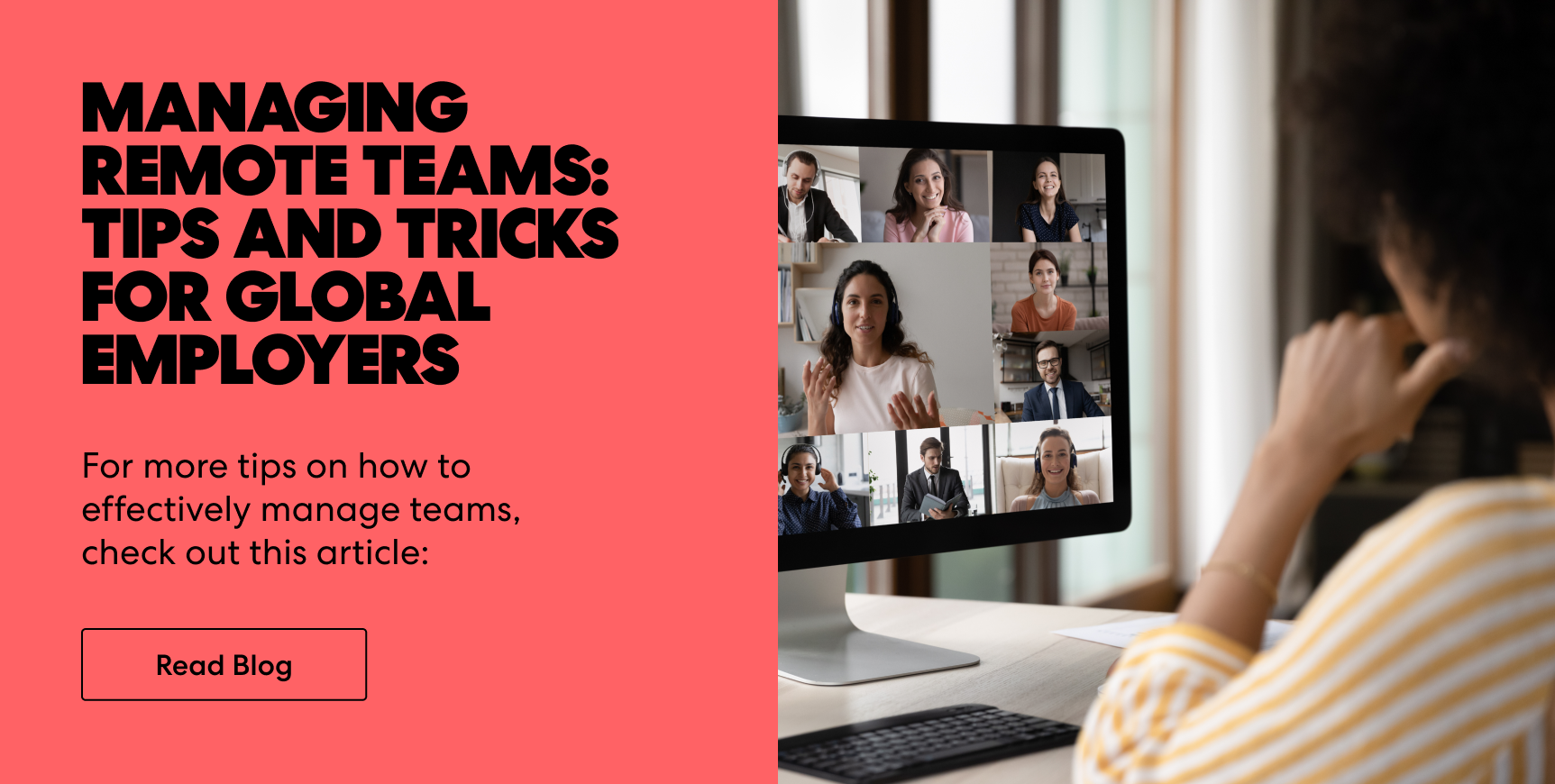As an HR leader, work hard to set up your managers and their talent for success. But since 2021, employees have been reporting record-high rates of stress at work, according to Gallup’s State of the Global Workplace 2023 Report.
Managers are a major influence on the overall stress that talent feels on the job. When employees were asked what they would improve about their workplace:
- 41% said they would like it if their managers were “more approachable” and could “talk openly”
- 41% said they would like their workplace to grant more autonomy to stimulate creativity
However, managers are stressed, too:
- 62% said they think right now is a good time to find a new job
Managers Need Support, Too
Although managers play a key role in ensuring the well-being of their teams, a significant number of managers say they don’t have the support from their organizations to enact the changes that could help.
Seventy percent of managers said “rigid company policies, a heavy workload, and an unsupportive workplace culture” prevent them from supporting their teams more than they are, and only 42% feel “empowered to help their company achieve its well-being commitments.”
From top to bottom, it seems that people at every level of organizations worldwide are becoming more stressed.
Although employees need to know how to separate work and personal life—and how to enforce boundaries—they can’t fix all their workplace stressors by themselves. It’s also on leaders like you to improve employee engagement and work-life balance by addressing the structural flaws of your organization, executing actionable plans to improve the well-being of your employees, and ensuring you understand their needs.
How Health Affects Employee Engagement and Work-Life Balance
Work is one of the most significant factors negatively affecting people’s mental health, according to the Deloitte report.
A staggering 94% percent of employees feel their manager should have at least some responsibility for their well-being—and 96% of managers agree. But managers often do not take the steps necessary to promote employee well-being:

There is also a growing disconnect between how executives and employees perceive workforce well-being. This disparity is evident not only in the rising rates of churn but also the declining health of workers. While most employees feel their health worsened or stayed the same last year, more than three in four C-suite leaders believing their workforce's health had actually improved.
Why Is it Important to Separate Work and Personal Life?
Employee health and work satisfaction have a direct impact on turnover, productivity, and engagement. Turnover costs businesses an estimated $1 trillion per year in the U.S. alone, and 51% of employees say they are actively looking for a new job.
Health decline also wreaks havoc on the productivity and longevity of your workforce. Holistically healthy employees are more likely to be productive, engaged, and resilient in the face of setbacks.

How to Promote Work-Life Balance for Your Team
Good managers make a difference. Although everyone has a different approach to leading a workforce, there are a few key ways that your managers can help improve the work-life balance of their direct reports, boosting productivity and retention while staving off burnout.
Participate in Training
Managers who are sympathetic to their employees’ needs and receptive to feedback can significantly mitigate the day-to-day stress felt by employees.
Research shows that talent wants their organizations to offer mandatory mental health training for managers as well as employees. Providing training on how everyone on your teams should manage their mental health—including setting boundaries at work and managing work-life balance—helps your workforce advocate for their needs and shows that you care about them.
Model Healthy Behavior
Taking time off, setting healthy boundaries, and regularly taking advantage of medical benefits are things that everyone should be doing anyway. Encourage managers to model these behaviors so they empower their teams to do the same.
Leverage Tech Tools
Using the right tech tools helps maintain open communication between managers and their teams, which is essential for completing tasks efficiently. This creates fewer headaches for employees and their managers.
Ensuring your teams use digital platforms like Slack, Asana, Trello, Google Drive, and Dropbox allows them to quickly and easily share information and project assets while transparently managing multiple projects. The result is less stress and time wasted trying to figure out how to resolve a problem on a given task and more time doing it.
Encourage Open Communication
Regularly keeping in touch with talent is an important part of being a manager—especially when your managers oversee teams that work remotely or asynchronously.
Make sure your managers schedule regular one-on-one meetings with their team members to check in. It also gives talent the chance to let managers know of any roadblocks so they can ask for help.
Set Clear Expectations
The more explicit you are when defining what success looks like for your team, the better you set your team up for success.
Knowing the priorities, milestones, performance goals, and individual responsibilities for each project reduces friction and allows them to do their best work, empowering them to manage their time and feel confident someone will recognize their efforts. Ensure your managers are clear on these things and that they make themselves available to answer questions as they come up—and to be prepared to shift some priorities as needed.
Self-Care and Work-Life Balance for Employees
Work causes mental health issues and burnout over time. One in three employees in the U.S. says their job is hurting their mental health.
While it’s important to empower managers to help talent balance their professional and personal lives—and allow them to take advantage of those resources—employees can take steps to help improve that balance and better manage their mental health.
Self-Advocacy
Encourage employees to establish boundaries with their coworkers and managers. Many employees experience burnout because of work—and many list lack of support from their managers or lack of boundaries at work as common causes.
It can be hard for talent to ask for help. Employees are under a lot of pressure to perform, and having time off or workplace accommodation requests denied can be demoralizing.
Your employees understand their needs better than anyone else. Let your talent know that if they feel themselves starting to get burnt out, they can talk with their manager about what’s going on in their life and get the flexibility they need.
Setting Boundaries
If talent is having problems caused by work bleeding into their personal life (or vice-versa), it’s important that they set boundaries with their coworkers.
Encourage talent to use “I” statements—statements that center their feelings, thoughts, and experiences—to explain their needs and what they need to deal with them. It’s also a good idea for talent to avoid accusatory or combative language when having these conversations.
Organizing seminars or training sessions for dealing with problems like these empowers talent to establish and maintain healthy work relationships with colleagues. It also shows employees that your company wants them to advocate for themselves and address stressful situations.
Establish Regular Routines
A lot of people find it hard to “switch off” after work—especially when they work from home. We need time for our brains to reset after working eight hours or more.
Establishing a routine helps us signal that our workday is over. Going for a walk, going to the gym, or even simple things like changing your clothes can be all it takes to help your mind shift back into your personal life.
Make sure your talent keeps regular work hours and communicates their schedule to their coworkers—especially their hard-stops. Encouraging them to turn off notifications on their phone, putting their work computer away at the end of the day, and making rules about when to read work emails are other great ways to improve your employee’s work-life balance, especially if they work remotely or with teammates who operate in different time zones.
Take Up a Hobby
When you have other interests outside of work, it’s easier to switch gears and stop thinking about work at the end of the day. This can do wonders for your mental health—and the same goes for your talent.
Creating employee groups based on specific interests encourages them to pursue their hobbies, and gives them social opportunities as well. Groups could center around everything from gardening and cooking to hiking and music.
Make Your Company A Dream Destination For Top Talent
The world of work may be changing, but we’re here to help you navigate the tough times and come out stronger. Improving work-life balance is just one important facet of reducing churn and attracting top talent.
Want to learn more about the factors changing the current work landscape? Download our guide today.





